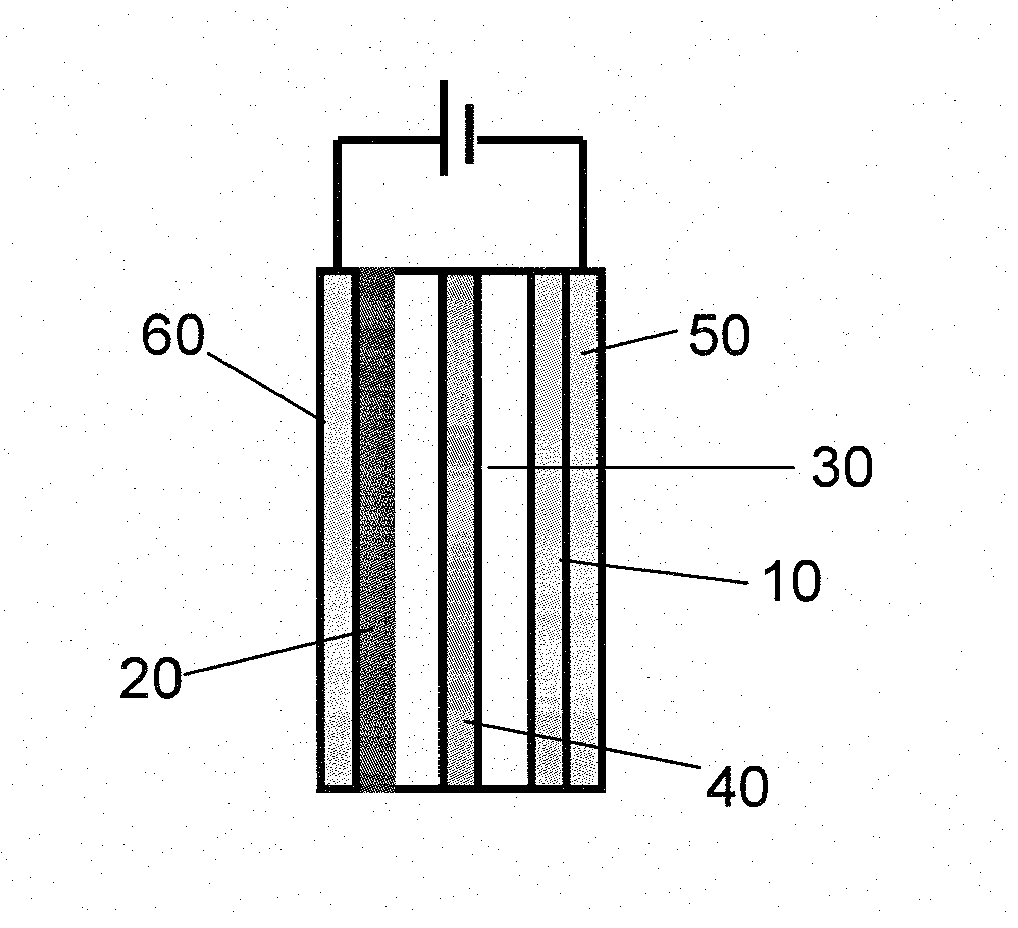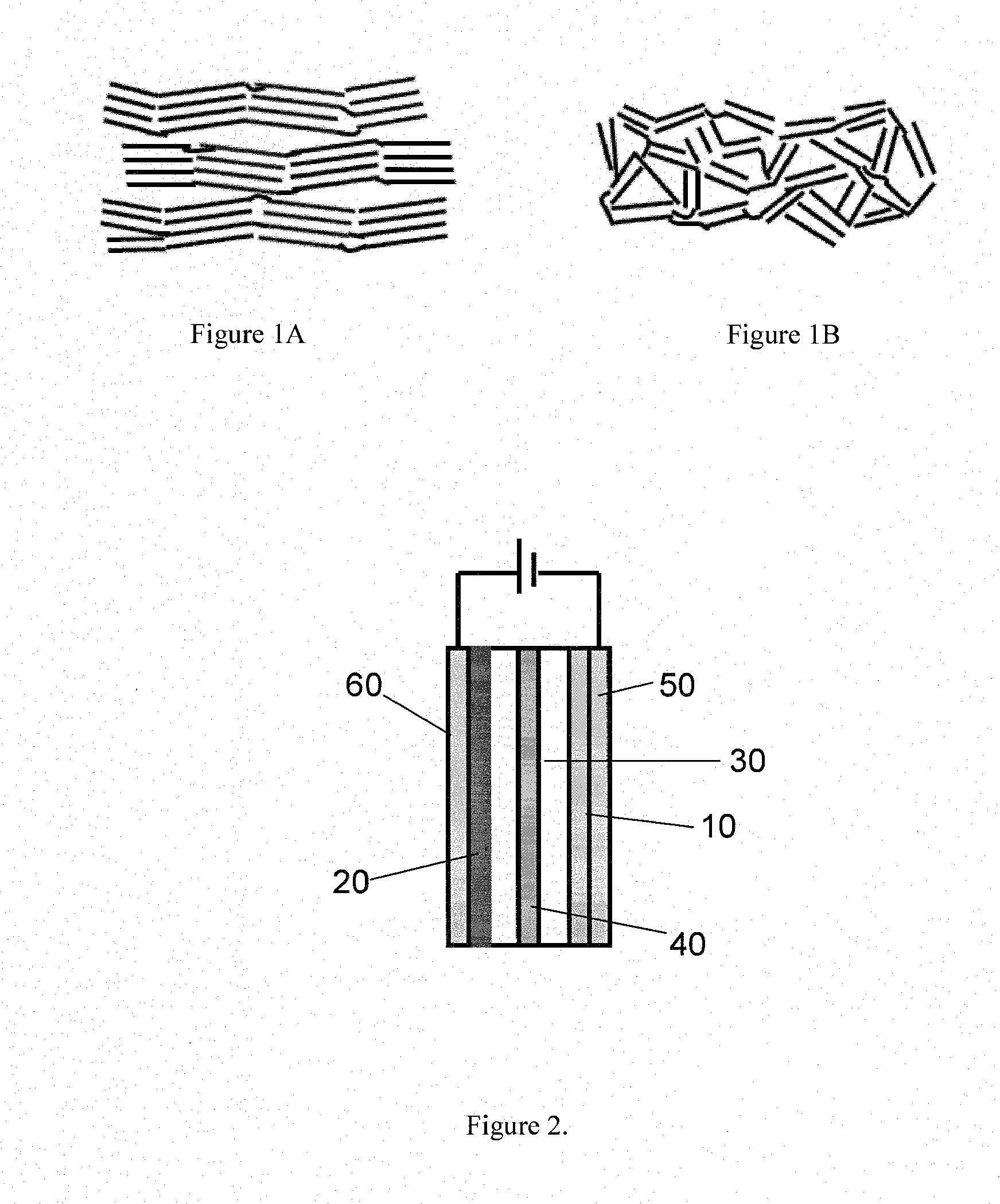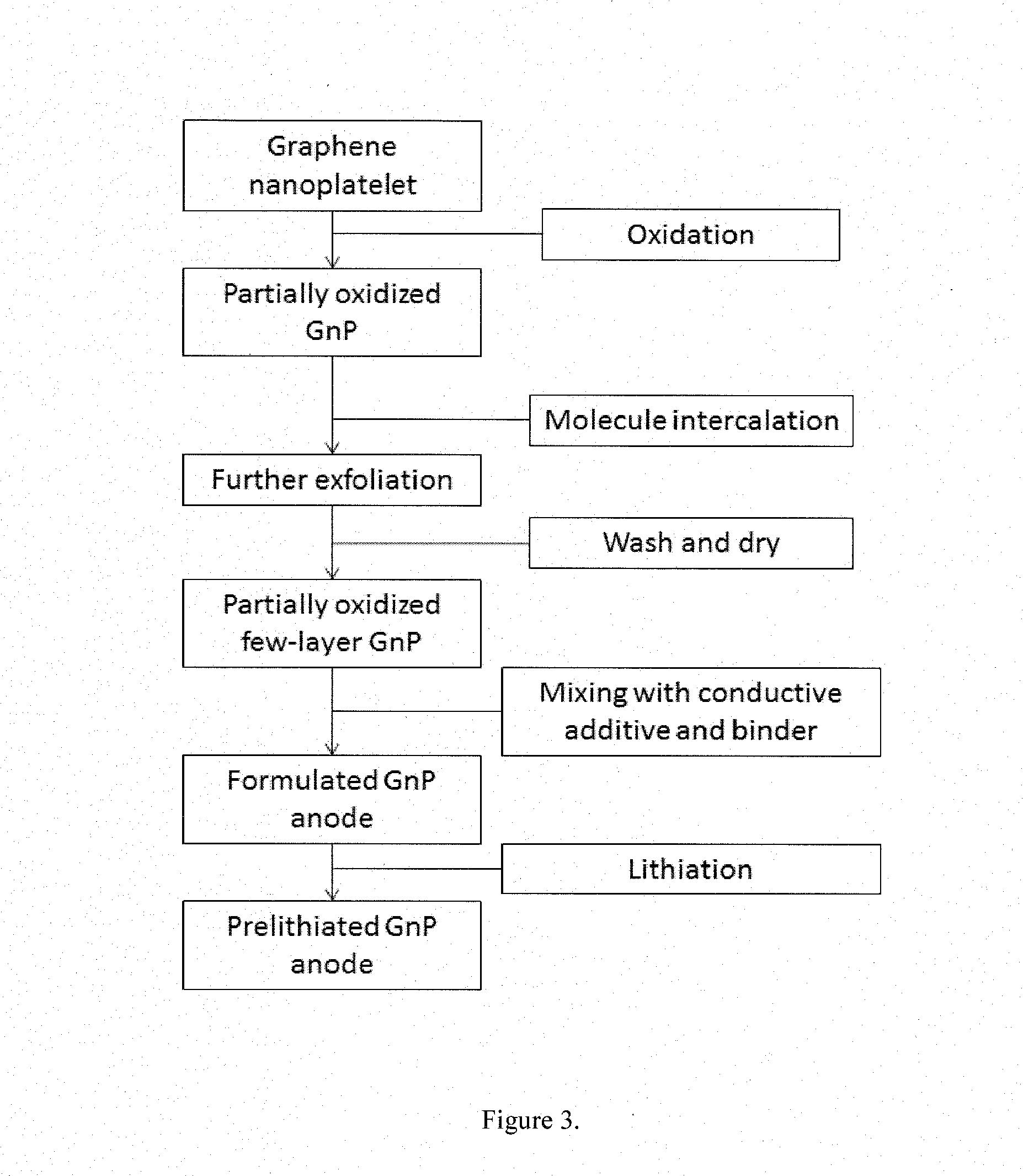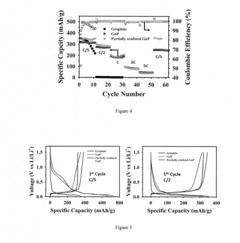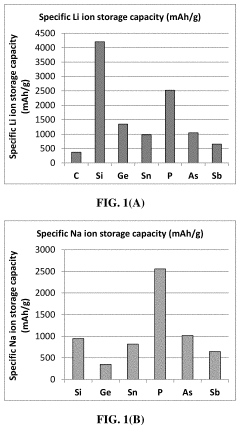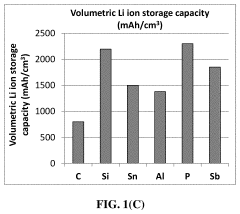Graphene Battery's Advantage in Quick Charging Technologies
AUG 6, 202510 MIN READ
Generate Your Research Report Instantly with AI Agent
Patsnap Eureka helps you evaluate technical feasibility & market potential.
Graphene Battery Evolution and Objectives
Graphene batteries have emerged as a promising technology in the field of energy storage, particularly in the realm of quick charging capabilities. The evolution of graphene batteries can be traced back to the early 2010s when researchers first began exploring the potential of graphene in energy storage applications. Since then, significant advancements have been made in understanding and harnessing the unique properties of graphene for battery technology.
The primary objective of graphene battery development is to overcome the limitations of traditional lithium-ion batteries, particularly in terms of charging speed, energy density, and cycle life. Graphene's exceptional electrical conductivity and high surface area make it an ideal material for enhancing the performance of battery electrodes. Researchers aim to leverage these properties to create batteries that can charge significantly faster than conventional lithium-ion batteries while maintaining or improving energy storage capacity.
One of the key goals in graphene battery evolution is to achieve ultra-fast charging times, potentially reducing charging durations from hours to minutes. This objective is particularly crucial for electric vehicles, where long charging times remain a significant barrier to widespread adoption. By incorporating graphene into battery electrodes, scientists and engineers seek to facilitate rapid ion transfer and electron movement, thereby dramatically reducing charging times.
Another important objective in graphene battery development is to increase energy density. While quick charging is a primary focus, researchers are also working to ensure that graphene batteries can store more energy per unit volume or weight compared to traditional lithium-ion batteries. This dual approach aims to address both the charging speed and range concerns associated with electric vehicles and portable electronic devices.
Improving the cycle life and overall lifespan of batteries is another critical objective in graphene battery evolution. The integration of graphene into battery components is expected to enhance the structural stability of electrodes, potentially leading to batteries that can withstand thousands of charge-discharge cycles without significant degradation in performance.
As the technology progresses, researchers are also exploring ways to scale up graphene battery production for commercial applications. This involves developing cost-effective methods for large-scale graphene synthesis and integration into battery manufacturing processes. The ultimate goal is to create graphene batteries that are not only technologically superior but also economically viable for mass production and widespread adoption across various industries.
In conclusion, the evolution of graphene batteries is driven by the objectives of achieving ultra-fast charging capabilities, increased energy density, improved cycle life, and scalable production methods. These goals align with the broader aim of revolutionizing energy storage technology to meet the growing demands of electric vehicles, portable electronics, and renewable energy systems.
The primary objective of graphene battery development is to overcome the limitations of traditional lithium-ion batteries, particularly in terms of charging speed, energy density, and cycle life. Graphene's exceptional electrical conductivity and high surface area make it an ideal material for enhancing the performance of battery electrodes. Researchers aim to leverage these properties to create batteries that can charge significantly faster than conventional lithium-ion batteries while maintaining or improving energy storage capacity.
One of the key goals in graphene battery evolution is to achieve ultra-fast charging times, potentially reducing charging durations from hours to minutes. This objective is particularly crucial for electric vehicles, where long charging times remain a significant barrier to widespread adoption. By incorporating graphene into battery electrodes, scientists and engineers seek to facilitate rapid ion transfer and electron movement, thereby dramatically reducing charging times.
Another important objective in graphene battery development is to increase energy density. While quick charging is a primary focus, researchers are also working to ensure that graphene batteries can store more energy per unit volume or weight compared to traditional lithium-ion batteries. This dual approach aims to address both the charging speed and range concerns associated with electric vehicles and portable electronic devices.
Improving the cycle life and overall lifespan of batteries is another critical objective in graphene battery evolution. The integration of graphene into battery components is expected to enhance the structural stability of electrodes, potentially leading to batteries that can withstand thousands of charge-discharge cycles without significant degradation in performance.
As the technology progresses, researchers are also exploring ways to scale up graphene battery production for commercial applications. This involves developing cost-effective methods for large-scale graphene synthesis and integration into battery manufacturing processes. The ultimate goal is to create graphene batteries that are not only technologically superior but also economically viable for mass production and widespread adoption across various industries.
In conclusion, the evolution of graphene batteries is driven by the objectives of achieving ultra-fast charging capabilities, increased energy density, improved cycle life, and scalable production methods. These goals align with the broader aim of revolutionizing energy storage technology to meet the growing demands of electric vehicles, portable electronics, and renewable energy systems.
Market Demand for Fast-Charging Solutions
The market demand for fast-charging solutions has experienced exponential growth in recent years, driven by the rapid adoption of electric vehicles (EVs) and portable electronic devices. As consumers increasingly prioritize convenience and efficiency, the ability to quickly recharge batteries has become a critical factor in purchasing decisions across various industries.
In the automotive sector, range anxiety and charging time remain significant barriers to widespread EV adoption. A survey conducted by J.D. Power in 2022 revealed that 31% of potential EV buyers cited charging time as a major concern. This has created a substantial market opportunity for fast-charging technologies, with the global EV charging infrastructure market projected to reach $111.90 billion by 2028, according to Grand View Research.
The consumer electronics industry has also witnessed a surge in demand for rapid charging capabilities. Smartphone manufacturers have been in a race to offer the fastest charging speeds, with some devices now boasting charging times of less than 30 minutes for a full battery. This trend extends to laptops, tablets, and wearables, where quick charging has become a key differentiator in a highly competitive market.
Industrial applications present another significant market for fast-charging solutions. In sectors such as manufacturing, logistics, and construction, minimizing equipment downtime is crucial for operational efficiency. Fast-charging technologies for industrial batteries can significantly reduce charging times, leading to improved productivity and cost savings.
The energy storage sector is also driving demand for quick-charging solutions. As renewable energy sources become more prevalent, the need for efficient energy storage systems that can rapidly charge and discharge has increased. This is particularly important for grid stabilization and peak shaving applications.
Market research indicates that the Asia-Pacific region is expected to dominate the fast-charging market, fueled by rapid industrialization, government initiatives promoting EV adoption, and a burgeoning consumer electronics industry. North America and Europe follow closely, with stringent emissions regulations and growing environmental awareness driving the shift towards electrification.
As the demand for fast-charging solutions continues to grow, there is an increasing focus on developing technologies that not only reduce charging times but also address concerns about battery longevity and safety. This has led to significant investment in research and development, with graphene-based batteries emerging as a promising solution to meet these evolving market needs.
The market trajectory suggests that fast-charging capabilities will become a standard feature across various applications in the near future. This presents a substantial opportunity for technologies like graphene batteries, which have the potential to revolutionize the charging landscape and meet the escalating demand for quick, efficient, and reliable power solutions across multiple industries.
In the automotive sector, range anxiety and charging time remain significant barriers to widespread EV adoption. A survey conducted by J.D. Power in 2022 revealed that 31% of potential EV buyers cited charging time as a major concern. This has created a substantial market opportunity for fast-charging technologies, with the global EV charging infrastructure market projected to reach $111.90 billion by 2028, according to Grand View Research.
The consumer electronics industry has also witnessed a surge in demand for rapid charging capabilities. Smartphone manufacturers have been in a race to offer the fastest charging speeds, with some devices now boasting charging times of less than 30 minutes for a full battery. This trend extends to laptops, tablets, and wearables, where quick charging has become a key differentiator in a highly competitive market.
Industrial applications present another significant market for fast-charging solutions. In sectors such as manufacturing, logistics, and construction, minimizing equipment downtime is crucial for operational efficiency. Fast-charging technologies for industrial batteries can significantly reduce charging times, leading to improved productivity and cost savings.
The energy storage sector is also driving demand for quick-charging solutions. As renewable energy sources become more prevalent, the need for efficient energy storage systems that can rapidly charge and discharge has increased. This is particularly important for grid stabilization and peak shaving applications.
Market research indicates that the Asia-Pacific region is expected to dominate the fast-charging market, fueled by rapid industrialization, government initiatives promoting EV adoption, and a burgeoning consumer electronics industry. North America and Europe follow closely, with stringent emissions regulations and growing environmental awareness driving the shift towards electrification.
As the demand for fast-charging solutions continues to grow, there is an increasing focus on developing technologies that not only reduce charging times but also address concerns about battery longevity and safety. This has led to significant investment in research and development, with graphene-based batteries emerging as a promising solution to meet these evolving market needs.
The market trajectory suggests that fast-charging capabilities will become a standard feature across various applications in the near future. This presents a substantial opportunity for technologies like graphene batteries, which have the potential to revolutionize the charging landscape and meet the escalating demand for quick, efficient, and reliable power solutions across multiple industries.
Graphene Battery Technology: Current Status and Challenges
Graphene battery technology has emerged as a promising solution to address the limitations of conventional lithium-ion batteries, particularly in the realm of quick charging. The current status of graphene battery technology is characterized by significant advancements in laboratory settings, with researchers demonstrating remarkable improvements in charging speeds and energy density. However, the transition from laboratory prototypes to commercial-scale production remains a substantial challenge.
One of the primary advantages of graphene batteries is their ability to facilitate rapid charging without compromising battery life or safety. This is achieved through graphene's exceptional electrical conductivity and large surface area, which allows for faster ion transfer and heat dissipation. Several research groups have reported charging times as low as 15 minutes for graphene-enhanced batteries, compared to hours for traditional lithium-ion cells.
Despite these promising results, the widespread adoption of graphene battery technology faces several hurdles. The most significant challenge is the scalability of graphene production. While various methods exist for synthesizing graphene, such as chemical vapor deposition and liquid-phase exfoliation, producing high-quality graphene at industrial scales remains costly and complex. This production bottleneck has hindered the integration of graphene into commercial battery manufacturing processes.
Another critical challenge is the optimization of graphene's interaction with other battery components. While graphene exhibits excellent conductivity, its incorporation into electrode materials and electrolytes requires careful engineering to maximize performance benefits. Researchers are actively working on developing stable graphene composites and improving the interface between graphene and active materials to enhance overall battery efficiency.
The long-term stability and cycle life of graphene batteries also present ongoing challenges. Although graphene can potentially improve battery lifespan by reducing electrode degradation, ensuring consistent performance over thousands of charge-discharge cycles remains a key area of investigation. Additionally, safety concerns related to the use of new materials and high-power charging must be thoroughly addressed before widespread commercial adoption can occur.
Regulatory hurdles and standardization issues further complicate the path to market for graphene batteries. As a novel technology, graphene batteries must undergo rigorous testing and certification processes to meet safety and performance standards across different industries and regions. This regulatory landscape adds complexity and time to the development and commercialization timeline.
In conclusion, while graphene battery technology shows immense promise for revolutionizing quick charging capabilities, it currently faces a range of technical, manufacturing, and regulatory challenges. Overcoming these obstacles will require continued research, investment, and collaboration across academia and industry to fully realize the potential of graphene in next-generation energy storage solutions.
One of the primary advantages of graphene batteries is their ability to facilitate rapid charging without compromising battery life or safety. This is achieved through graphene's exceptional electrical conductivity and large surface area, which allows for faster ion transfer and heat dissipation. Several research groups have reported charging times as low as 15 minutes for graphene-enhanced batteries, compared to hours for traditional lithium-ion cells.
Despite these promising results, the widespread adoption of graphene battery technology faces several hurdles. The most significant challenge is the scalability of graphene production. While various methods exist for synthesizing graphene, such as chemical vapor deposition and liquid-phase exfoliation, producing high-quality graphene at industrial scales remains costly and complex. This production bottleneck has hindered the integration of graphene into commercial battery manufacturing processes.
Another critical challenge is the optimization of graphene's interaction with other battery components. While graphene exhibits excellent conductivity, its incorporation into electrode materials and electrolytes requires careful engineering to maximize performance benefits. Researchers are actively working on developing stable graphene composites and improving the interface between graphene and active materials to enhance overall battery efficiency.
The long-term stability and cycle life of graphene batteries also present ongoing challenges. Although graphene can potentially improve battery lifespan by reducing electrode degradation, ensuring consistent performance over thousands of charge-discharge cycles remains a key area of investigation. Additionally, safety concerns related to the use of new materials and high-power charging must be thoroughly addressed before widespread commercial adoption can occur.
Regulatory hurdles and standardization issues further complicate the path to market for graphene batteries. As a novel technology, graphene batteries must undergo rigorous testing and certification processes to meet safety and performance standards across different industries and regions. This regulatory landscape adds complexity and time to the development and commercialization timeline.
In conclusion, while graphene battery technology shows immense promise for revolutionizing quick charging capabilities, it currently faces a range of technical, manufacturing, and regulatory challenges. Overcoming these obstacles will require continued research, investment, and collaboration across academia and industry to fully realize the potential of graphene in next-generation energy storage solutions.
Existing Graphene-Based Quick Charging Solutions
01 Graphene-based electrode materials for fast charging
Graphene-based materials are used as electrode materials in batteries to enhance charging speed. The high conductivity and large surface area of graphene allow for rapid electron transfer and ion diffusion, significantly reducing charging time compared to conventional electrode materials.- Graphene-based electrode materials for fast charging: Graphene-based materials are used as electrode materials in batteries to enhance charging speed. The high conductivity and large surface area of graphene allow for rapid electron transfer and ion diffusion, significantly reducing charging time compared to conventional electrode materials.
- Graphene-enhanced electrolytes for improved ion transport: Incorporating graphene or graphene oxide into battery electrolytes can improve ion transport and reduce internal resistance. This enhancement leads to faster charging capabilities and improved overall battery performance.
- Graphene-based composite materials for battery components: Composite materials combining graphene with other materials, such as metal oxides or polymers, are used in various battery components. These composites can enhance conductivity, mechanical strength, and electrochemical properties, contributing to faster charging speeds and improved battery life.
- Graphene-enabled thermal management for rapid charging: Graphene's excellent thermal conductivity is utilized in battery thermal management systems. By efficiently dissipating heat generated during rapid charging, these systems allow for higher charging rates without compromising battery safety or lifespan.
- Graphene-based supercapacitors for ultra-fast charging: Graphene-based supercapacitors are developed to complement or replace traditional batteries in certain applications. These devices can achieve extremely fast charging speeds, often within seconds or minutes, due to their high power density and rapid charge-discharge capabilities.
02 Graphene-enhanced electrolytes for improved ion transport
Incorporating graphene or graphene oxide into battery electrolytes can improve ion transport and conductivity. This enhancement leads to faster charging rates by facilitating more efficient movement of ions between electrodes during the charging process.Expand Specific Solutions03 Graphene-based composite materials for battery electrodes
Composite materials combining graphene with other active materials, such as metal oxides or conductive polymers, are developed to optimize battery performance. These composites can enhance charge storage capacity and improve charge transfer kinetics, resulting in faster charging speeds.Expand Specific Solutions04 Graphene-enabled thermal management for rapid charging
Graphene's excellent thermal conductivity is utilized to improve heat dissipation in batteries during fast charging. By efficiently managing heat generation and distribution, graphene-based thermal management systems allow for higher charging currents without compromising battery safety or lifespan.Expand Specific Solutions05 Graphene-based supercapacitor-battery hybrid systems
Hybrid energy storage systems combining graphene-based supercapacitors with batteries are developed to achieve ultra-fast charging capabilities. The supercapacitor component, enhanced by graphene's high surface area and conductivity, enables rapid energy storage and release, complementing the battery's high energy density for improved overall charging speed.Expand Specific Solutions
Key Players in Graphene Battery Industry
The graphene battery market is in an early growth stage, characterized by rapid technological advancements and increasing commercial applications. The global market size for graphene batteries is projected to expand significantly in the coming years, driven by the demand for high-performance energy storage solutions. While the technology is still maturing, several key players are making substantial progress in commercialization. Companies like Global Graphene Group, NanoXplore, and LG Energy Solution are at the forefront of developing graphene-enhanced battery technologies. Academic institutions such as Northwestern University and Central South University are also contributing to fundamental research in this field. The competitive landscape is dynamic, with both established battery manufacturers and innovative startups vying for market share in this promising sector.
Global Graphene Group, Inc.
Technical Solution: Global Graphene Group has developed advanced graphene-enhanced battery technologies that significantly improve quick charging capabilities. Their proprietary graphene-silicon composite anode material enables ultra-fast charging, with batteries reaching 80% capacity in just 5 minutes[1]. The company's graphene-based electrodes increase the surface area for ion transfer, enhancing charge/discharge rates. They have also implemented a unique graphene coating on battery separators to improve thermal management and safety during rapid charging[2]. Global Graphene Group's batteries demonstrate a cycle life of over 3000 cycles while maintaining 80% capacity, addressing the longevity concerns often associated with fast-charging technologies[3].
Strengths: Superior fast-charging capability, improved thermal management, and extended cycle life. Weaknesses: Potentially higher production costs and the need for specialized manufacturing processes.
Honeycomb Battery Co.
Technical Solution: Honeycomb Battery Co. has developed a unique approach to graphene-enhanced batteries for quick charging applications. Their technology centers around a 3D graphene foam structure that serves as a highly conductive scaffold for active battery materials. This honeycomb-like structure provides an extensive surface area for ion transfer, significantly reducing charging times. Honeycomb's batteries have demonstrated charging speeds up to 20 times faster than conventional lithium-ion batteries, with the ability to reach 70% capacity in just 2 minutes[10]. The company's graphene foam also acts as an effective heat dissipation system, allowing for sustained high-power charging without thermal issues. Additionally, Honeycomb has developed a proprietary electrolyte formulation that works synergistically with their graphene structure to further enhance fast-charging capabilities while maintaining long-term stability.
Strengths: Innovative 3D graphene structure, exceptional charging speeds, and effective thermal management. Weaknesses: Potentially complex manufacturing process and higher production costs compared to traditional battery technologies.
Core Innovations in Graphene Battery Technology
Method for manufacturing graphene-incorporated rechargeable li-ion battery
PatentInactiveUS20150000118A1
Innovation
- The method involves prelithiating graphene-based electrodes by introducing an appropriate amount of lithium into the anode film before assembly, separating the anode and cathode with a non-aqueous ionic conductor, and using a graphene-based anode with pristine or functionalized graphene layers to enhance specific capacity and rate capability while minimizing irreversible reactions.
Conducting polymer network-protected phosphorus anode active material for lithium-ion or sodium-ion batteries
PatentActiveUS20210351409A1
Innovation
- A conducting polymer network-encapsulated phosphorus-based anode particulate is developed, where a core of phosphorus material is encapsulated within a cross-linked polymer shell, enhancing electronic and ion conductivity, and accommodating volume expansion, thereby reducing direct contact with the electrolyte and minimizing SEI destruction.
Environmental Impact of Graphene Batteries
The environmental impact of graphene batteries is a crucial consideration in the development and adoption of this technology. Graphene batteries offer significant advantages in quick charging capabilities, but their environmental implications must be thoroughly assessed.
One of the primary environmental benefits of graphene batteries is their potential to reduce energy consumption during the charging process. The rapid charging capabilities of graphene batteries mean that less time is required to fully charge a device, potentially leading to lower overall energy usage. This efficiency could contribute to reduced carbon emissions associated with electricity generation, particularly in regions where fossil fuels are still a significant part of the energy mix.
Furthermore, the longevity of graphene batteries may have positive environmental implications. With their ability to withstand a higher number of charge cycles compared to traditional lithium-ion batteries, graphene batteries could potentially reduce the frequency of battery replacements. This longevity could lead to a decrease in electronic waste, as fewer batteries would need to be disposed of over time.
However, the production of graphene itself raises some environmental concerns. The manufacturing process of graphene can be energy-intensive and may involve the use of harmful chemicals. As the demand for graphene batteries increases, it is crucial to develop and implement more sustainable production methods to mitigate these environmental impacts.
The recyclability of graphene batteries is another important factor to consider. While research is ongoing, early indications suggest that graphene batteries may be more easily recyclable than traditional lithium-ion batteries. This could lead to improved resource recovery and reduced environmental impact at the end of the battery's life cycle.
Additionally, the use of graphene in batteries may reduce the reliance on certain rare earth metals and other materials that are often associated with environmental degradation during mining and processing. This shift could potentially alleviate some of the environmental pressures caused by the extraction of these resources.
It is also worth noting that the improved performance of graphene batteries in electric vehicles could indirectly contribute to environmental benefits. By enabling longer driving ranges and faster charging times, graphene batteries could accelerate the adoption of electric vehicles, leading to reduced emissions from the transportation sector.
In conclusion, while graphene batteries show promise in terms of their environmental impact, particularly in energy efficiency and potential waste reduction, it is essential to continue research and development to address the environmental challenges associated with their production and end-of-life management. As the technology matures, a comprehensive life cycle assessment will be crucial to fully understand and optimize the environmental footprint of graphene batteries.
One of the primary environmental benefits of graphene batteries is their potential to reduce energy consumption during the charging process. The rapid charging capabilities of graphene batteries mean that less time is required to fully charge a device, potentially leading to lower overall energy usage. This efficiency could contribute to reduced carbon emissions associated with electricity generation, particularly in regions where fossil fuels are still a significant part of the energy mix.
Furthermore, the longevity of graphene batteries may have positive environmental implications. With their ability to withstand a higher number of charge cycles compared to traditional lithium-ion batteries, graphene batteries could potentially reduce the frequency of battery replacements. This longevity could lead to a decrease in electronic waste, as fewer batteries would need to be disposed of over time.
However, the production of graphene itself raises some environmental concerns. The manufacturing process of graphene can be energy-intensive and may involve the use of harmful chemicals. As the demand for graphene batteries increases, it is crucial to develop and implement more sustainable production methods to mitigate these environmental impacts.
The recyclability of graphene batteries is another important factor to consider. While research is ongoing, early indications suggest that graphene batteries may be more easily recyclable than traditional lithium-ion batteries. This could lead to improved resource recovery and reduced environmental impact at the end of the battery's life cycle.
Additionally, the use of graphene in batteries may reduce the reliance on certain rare earth metals and other materials that are often associated with environmental degradation during mining and processing. This shift could potentially alleviate some of the environmental pressures caused by the extraction of these resources.
It is also worth noting that the improved performance of graphene batteries in electric vehicles could indirectly contribute to environmental benefits. By enabling longer driving ranges and faster charging times, graphene batteries could accelerate the adoption of electric vehicles, leading to reduced emissions from the transportation sector.
In conclusion, while graphene batteries show promise in terms of their environmental impact, particularly in energy efficiency and potential waste reduction, it is essential to continue research and development to address the environmental challenges associated with their production and end-of-life management. As the technology matures, a comprehensive life cycle assessment will be crucial to fully understand and optimize the environmental footprint of graphene batteries.
Scalability and Manufacturing Challenges
The scalability and manufacturing challenges of graphene batteries for quick charging technologies present significant hurdles in their widespread adoption. One of the primary obstacles is the complexity of producing high-quality graphene at scale. The current methods for graphene synthesis, such as chemical vapor deposition (CVD) and exfoliation, are often limited in their ability to produce large quantities of defect-free graphene sheets. This limitation directly impacts the potential for mass production of graphene-based battery components.
Furthermore, the integration of graphene into existing battery manufacturing processes poses additional challenges. Traditional battery production lines are not optimized for handling nanomaterials like graphene, requiring substantial modifications to equipment and procedures. This adaptation process can be both time-consuming and costly, potentially deterring manufacturers from investing in the technology.
The consistency and quality control of graphene-enhanced batteries also present significant challenges. Ensuring uniform distribution of graphene within the battery structure is crucial for optimal performance, yet achieving this uniformity at scale remains difficult. Variations in graphene quality or distribution can lead to inconsistencies in battery performance, which is unacceptable for commercial applications.
Another critical factor is the cost of production. While graphene offers superior properties for quick charging, the current manufacturing costs are substantially higher than those of conventional battery materials. This cost disparity makes it challenging to compete with established battery technologies on a price-per-unit basis, potentially limiting market penetration.
Environmental and safety concerns also play a role in scaling up graphene battery production. The handling of nanomaterials requires stringent safety protocols and specialized equipment, which can increase operational costs and complexity. Additionally, the environmental impact of large-scale graphene production and disposal needs careful consideration to ensure sustainability.
Despite these challenges, ongoing research and development efforts are focused on addressing these scalability and manufacturing issues. Innovations in graphene synthesis techniques, such as roll-to-roll production methods, show promise for increasing production volumes. Similarly, advancements in battery assembly processes are being explored to better incorporate graphene materials into existing manufacturing lines.
In conclusion, while graphene batteries offer significant advantages in quick charging technologies, overcoming the scalability and manufacturing challenges is crucial for their widespread adoption. Continued investment in research and development, along with collaborative efforts between material scientists, engineers, and manufacturers, will be essential in realizing the full potential of graphene batteries in commercial applications.
Furthermore, the integration of graphene into existing battery manufacturing processes poses additional challenges. Traditional battery production lines are not optimized for handling nanomaterials like graphene, requiring substantial modifications to equipment and procedures. This adaptation process can be both time-consuming and costly, potentially deterring manufacturers from investing in the technology.
The consistency and quality control of graphene-enhanced batteries also present significant challenges. Ensuring uniform distribution of graphene within the battery structure is crucial for optimal performance, yet achieving this uniformity at scale remains difficult. Variations in graphene quality or distribution can lead to inconsistencies in battery performance, which is unacceptable for commercial applications.
Another critical factor is the cost of production. While graphene offers superior properties for quick charging, the current manufacturing costs are substantially higher than those of conventional battery materials. This cost disparity makes it challenging to compete with established battery technologies on a price-per-unit basis, potentially limiting market penetration.
Environmental and safety concerns also play a role in scaling up graphene battery production. The handling of nanomaterials requires stringent safety protocols and specialized equipment, which can increase operational costs and complexity. Additionally, the environmental impact of large-scale graphene production and disposal needs careful consideration to ensure sustainability.
Despite these challenges, ongoing research and development efforts are focused on addressing these scalability and manufacturing issues. Innovations in graphene synthesis techniques, such as roll-to-roll production methods, show promise for increasing production volumes. Similarly, advancements in battery assembly processes are being explored to better incorporate graphene materials into existing manufacturing lines.
In conclusion, while graphene batteries offer significant advantages in quick charging technologies, overcoming the scalability and manufacturing challenges is crucial for their widespread adoption. Continued investment in research and development, along with collaborative efforts between material scientists, engineers, and manufacturers, will be essential in realizing the full potential of graphene batteries in commercial applications.
Unlock deeper insights with Patsnap Eureka Quick Research — get a full tech report to explore trends and direct your research. Try now!
Generate Your Research Report Instantly with AI Agent
Supercharge your innovation with Patsnap Eureka AI Agent Platform!
